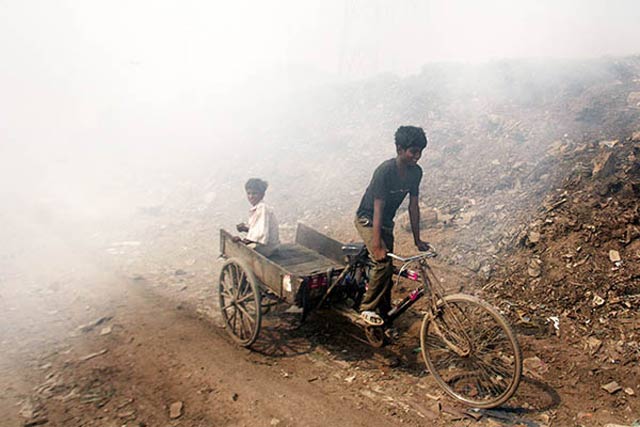In Islamabad, the recurring issue of smog is once again affecting Punjab, particularly in and around regions like Lahore, Faisalabad, and Gujranwala. The severity of the problem has led to a proposal to declare Wednesdays as off days for the next few months.

Smog poses various health risks, including respiratory, eye, and skin diseases, which have a significant impact on the affected individuals and their families.
Smog results from a combination of smoke (air pollution) and fog, with air pollution particles suspended in fog droplets, creating a hazardous mix. This article explores the causes and potential solutions to address this problem.
One immediate solution that has been successfully implemented in China, as well as in Southeast Asian countries and Delhi, India, is the strategic use of water sprinkling. This method involves creating water droplets and dispersing them from a height of 50 meters, often utilizing fire-fighting vehicles for this purpose. Expert assistance from China and essential equipment can be sought to execute this technique.
The effectiveness of this solution depends on various factors, including the sprinkling techniques used and weather conditions. Pollution levels can decrease within an hour as the water droplets absorb pollutant particles and bring them down to the ground. While water consumption is a concern, recycling can mitigate this issue, making this an approach worth trying, particularly in the most affected areas.
Air pollution in the region is attributed to factors such as industrial activities, construction work, vehicular emissions, and waste burning. Transportation, including the quality of fuel, is a significant contributor to air pollution, with measures such as adjusting holidays and timings having the potential to reduce emissions.
Notably, Pakistan has made efforts to import low-sulfur petrol and diesel since 2018, but local refineries face challenges in producing low-sulfur fuels. A potential solution could involve banning the use of high-sulfur petrol and diesel produced locally in pollution-sensitive areas of central Punjab, which is a manageable step.
Electric vehicles (EVs) represent the ultimate solution for reducing pollution from the transport sector, but their widespread adoption is complex. Pakistan’s EV policy aims to have 30% of on-road vehicles be EVs, and steps are being taken to promote this transition, such as introducing EV buses in Islamabad and converting existing fuel vehicles to EVs, particularly for buses and motorcycles.
Lahore and Faisalabad, as major industrial centers, need better control of emissions, especially in smaller industries that often resort to burning waste and cheap, polluting fuels due to supply limitations and cost concerns. Organizing industrial zones at more distant locations, along with extending support for emission control technologies, can be considered.
In addition to the industrial sector, agricultural waste burning is a significant issue, causing pollution in the region. Installing biogas or bio-CNG plants for the safe disposal of rice stubble and bio-gas production is a long-term solution to this problem.
Municipal solid waste (MSW) burning is common in many parts of Pakistan, with a substantial portion of MSW being organic waste. This green waste can be utilized to produce biogas, significantly reducing the waste that needs to be landfilled.
Rural household cooking is another source of pollution, particularly due to inefficient stoves that burn biomass. Encouraging the use of new gas stoves designed for efficient and low-pollution burning, through awareness campaigns, subsidies, and support from gas companies, can alleviate this issue.
The construction sector also contributes to pollution, with open trucks and dust from construction sites being major culprits. Implementing measures such as facade coverings and on-site water sprinkling can help mitigate dust pollution. Road construction under government projects should adhere to pollution control provisions, even if not enforced by local stakeholders.
Finally, planting greenery wherever possible and sprinkling water in sandy areas near urban settlements can contribute to reducing air pollution.








Leave a Comment